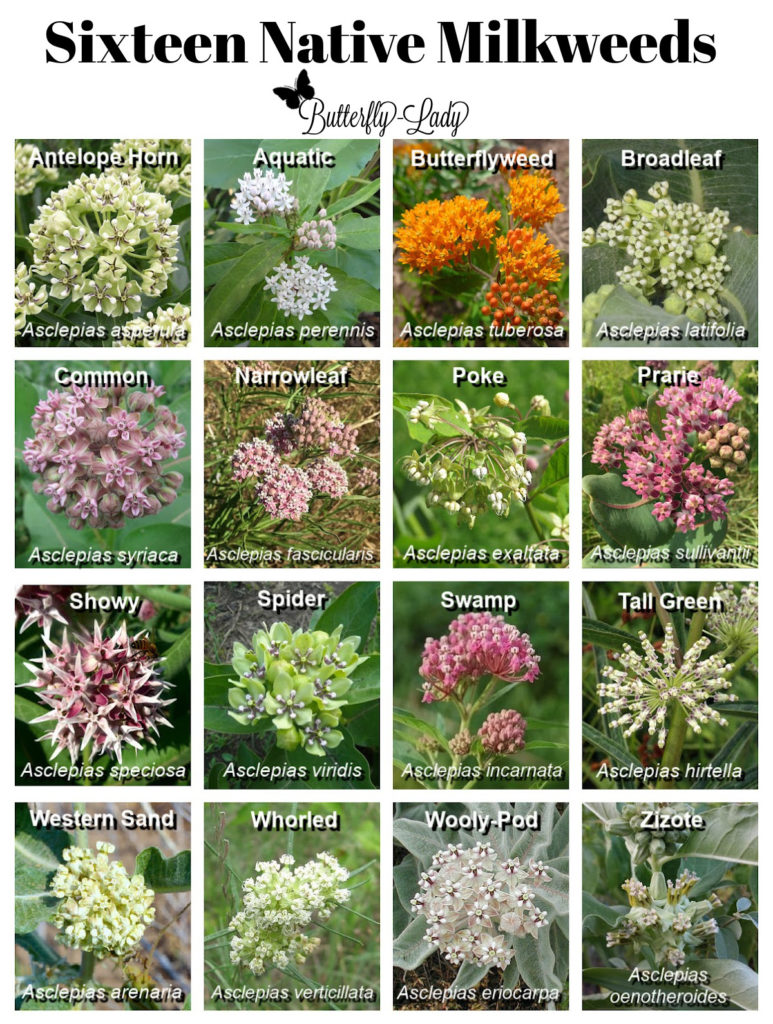Most native milkweed seeds require cold stratification in order to germinate and grow into healthy plants. What does that mean?
Cold Stratification is a cold, moist period that breaks seed dormancy. In nature, this process occurs in winter, keeping seeds from germinating until conditions are more ideal in the spring. Milkweed and other perennials (plants that live for several years) are more likely to require cold stratification. Cold stratification is very important for the germination and growth of native milkweeds.
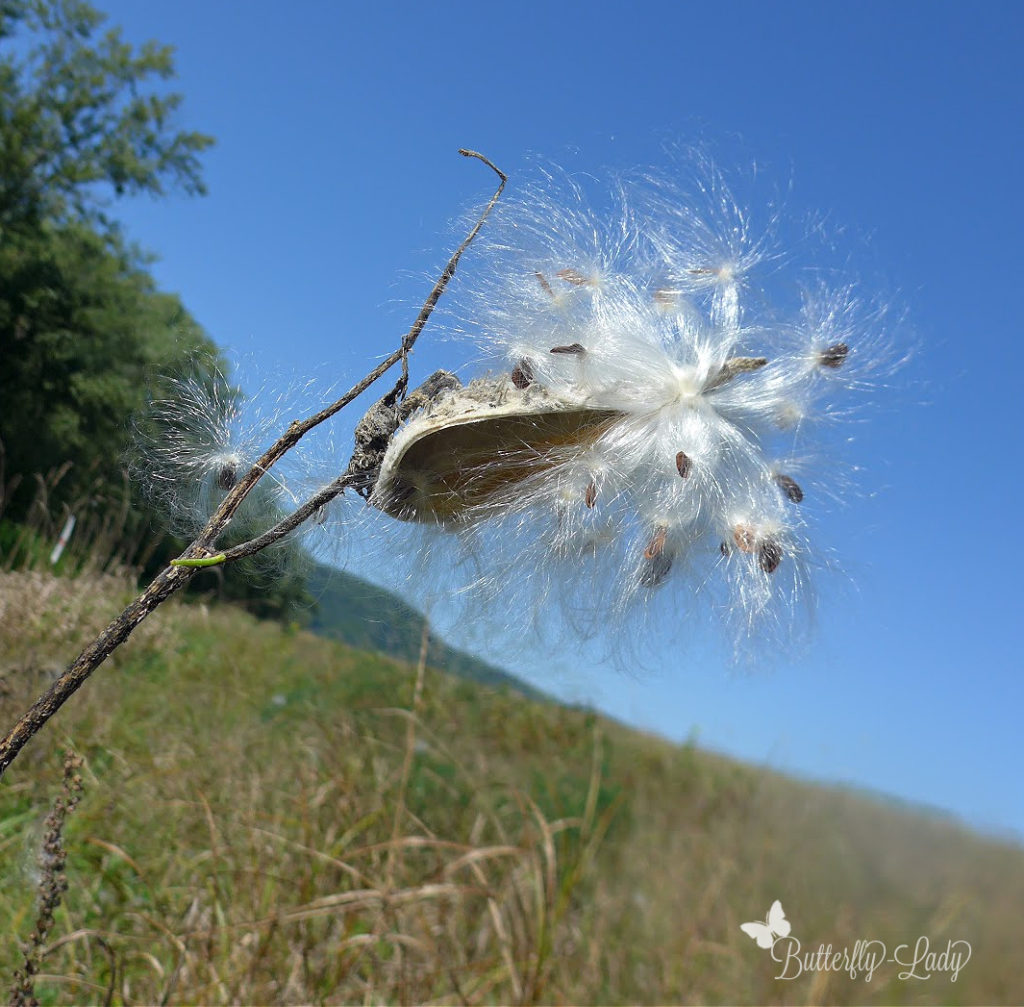
Without prolonged exposure to cold temperatures, your milkweed seed is unlikely to sprout. In the wild, seed dormancy is usually overcome by the seed spending time in the ground through a winter period and having its hard seed coat softened by frost and weathering action. By doing so the seed is undergoing a natural form of “cold stratification”.
Can I just scatter milkweed seeds? You can. That’s how nature does it. But, if you want the plants in a certain place or better odds of germination, they will need your help.
Fall Sowing
If you live where it freezes in the winter, late fall is a good time for direct sowing milkweed seeds outdoors. The benefit is that nature provides the winter conditions needed to stratify the seeds and expose them to cold and moist conditions. The alternating freeze and thaw of winter helps break down the seed coat and starts the growing process. Once the sun comes out and the ground is warm in the spring, the seeds will germinate on their own.

Winter Sowing
Winter sowing is another method that allows Mother Nature to cold stratify milkweed seeds. Winter sowing is the process where seeds are sowed outdoors in the winter, typically in milk jug, or any other plastic container with a lid. The plastic containers act like a mini greenhouse and prevent the seeds from drying out and protect the seeds from hungry critters. Winter sowing works best in USDA Zones 4-8.
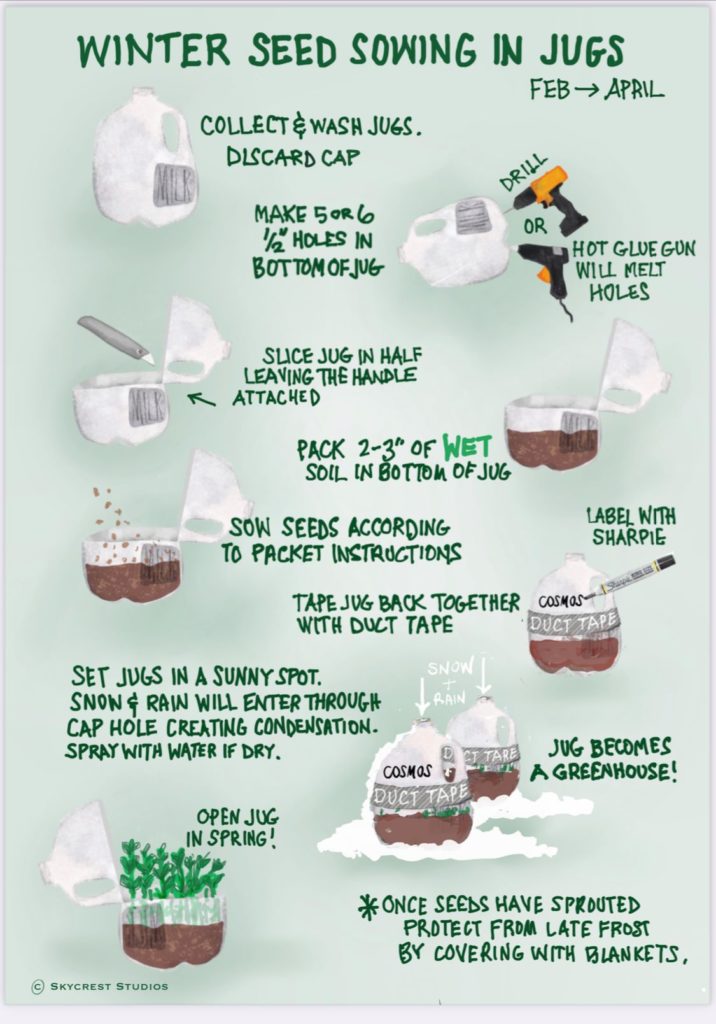
Click here to read more about winter sowing milkweed seeds: http://butterfly-lady.com/winter-sowing-milkweed-seeds/
Spring Sowing
If you want to wait until spring to plant your seeds you will need to be sure that you cold stratify your seeds inside the refrigerator for at least 45 days. The simplest is to put seeds in moist soil or peat and store in an old refrigerator. If you don’t want soil in your refrigerator, you can also layer seeds between moist paper towels in a plastic container or Ziploc bag in your crisper, keeping them cold for a minimum of three weeks and up to three months.
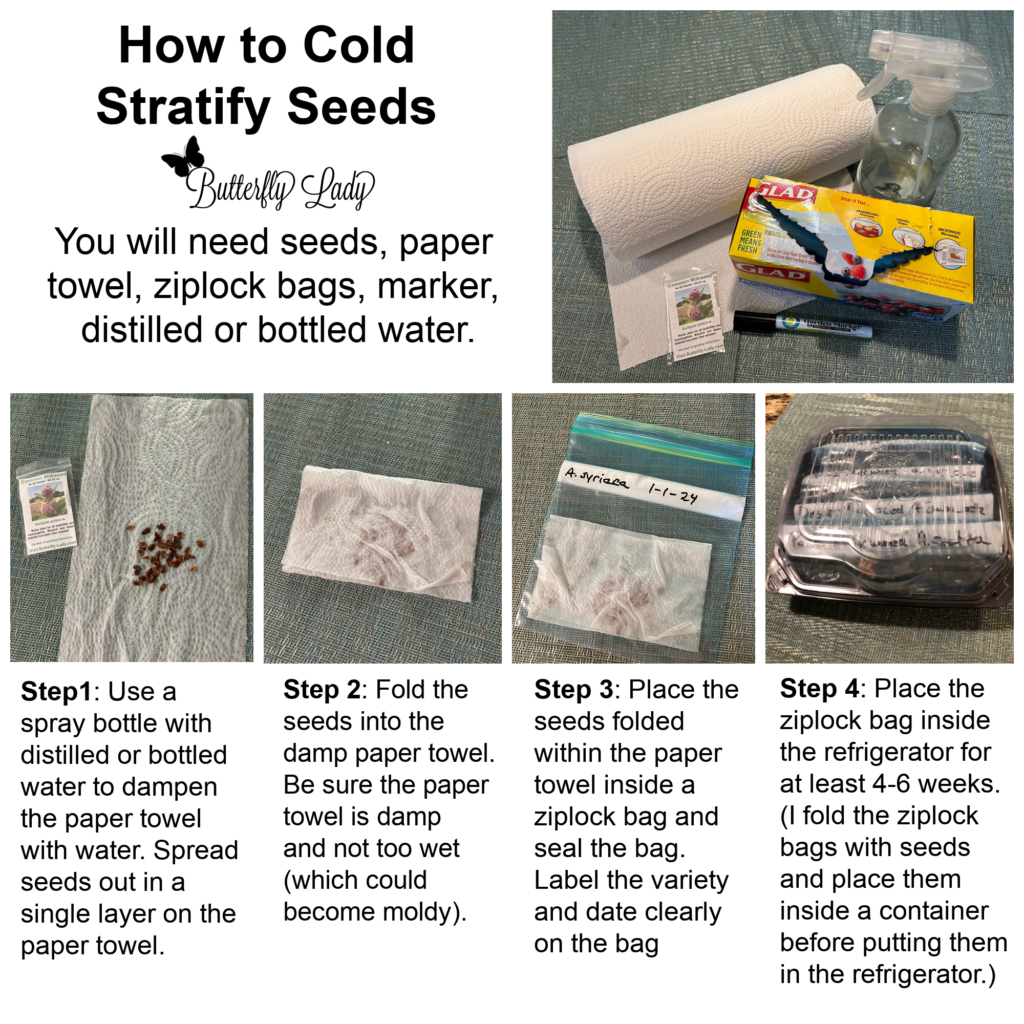
You can get a head start and plant the seeds indoors in containers after they have been cold stratified in the refrigerator. Milkweed seeds can be direct sown in spring, but transplants have better success. Fill pots or trays with light, well-drained soil. I strongly suggest using Pro Seed Starting Mix Contains that contains MYCOACTIVE, a proprietary formula to stimulate vigorous growth. Add the seeds and press down onto the soil. You do not need to cover the seeds but if you do, do so with just an eighth of an inch of soil. Keep soil moist and pots in a sunny, warm spot or under grow lights until the seeds germinate.
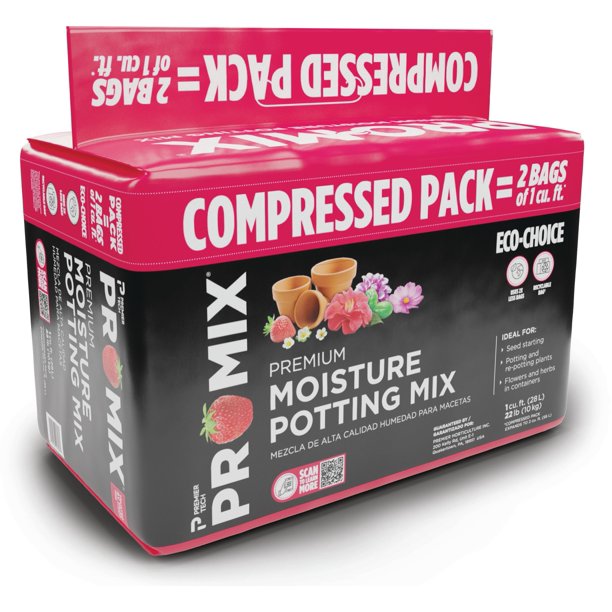
The seeds will take approximately 10 days to germinate. Once there are four true leaves on the seedlings (the seedlings will be approximately three inches tall), the plants can be transplanted into your garden once the danger of frost has passed.
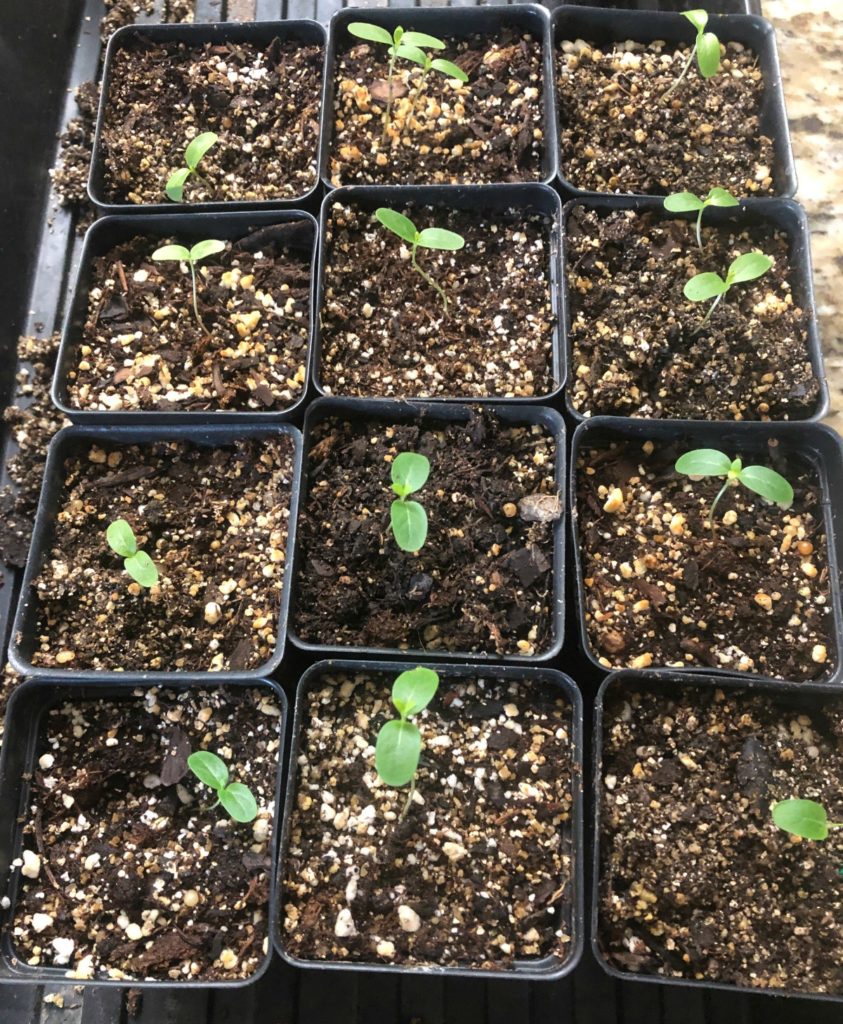
Most milkweed species do best in full sunlight, so choose an open area with lots of sun so clear a patch in a sunny spot, giving each plant plenty of room to spread its roots. Water frequently until your plants are established.
Click here for more detailed information on planting seeds in the spring: http://butterfly-lady.com/planting-seeds-in-spring/
Good luck with your milkweed seeds and let us know how it goes!
